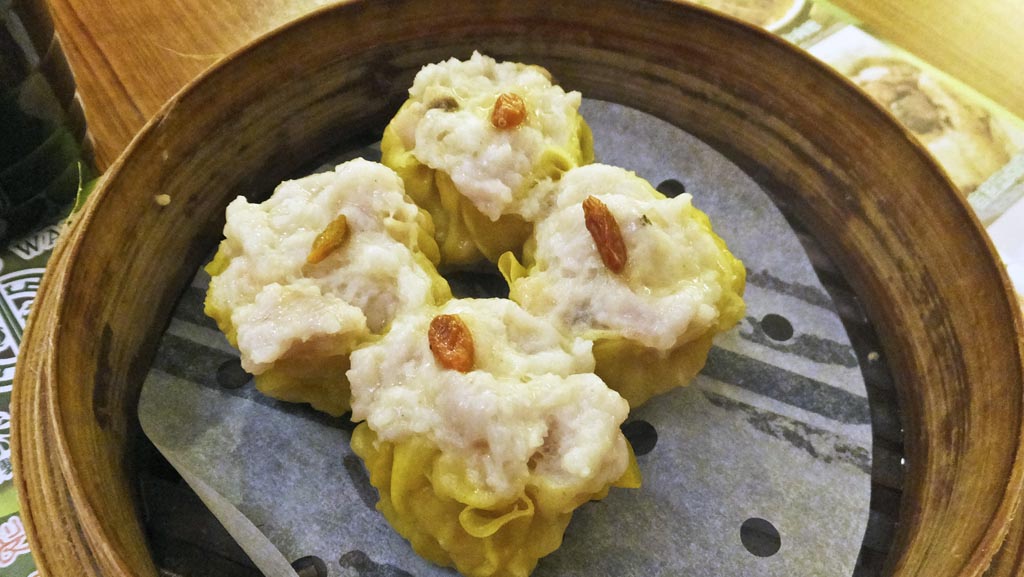
A Michelin-starred meal for less than $20? You can find it in Hong Kong, along with a vast array of other gourmet treats in the most unpretentious of settings.
Dining like the locals in Hong Kong requires going beyond the externals. On streets lined with hawkers’ stalls and walk-up apartment blocks, the aromas and sights of fresh food being prepared and cooked are pervasive.
Those who are willing to look beyond the often simple décor of tiny restaurants–and in some cases share a table with other diners–will be rewarded with some of the tastiest and most freshly made food available anywhere.
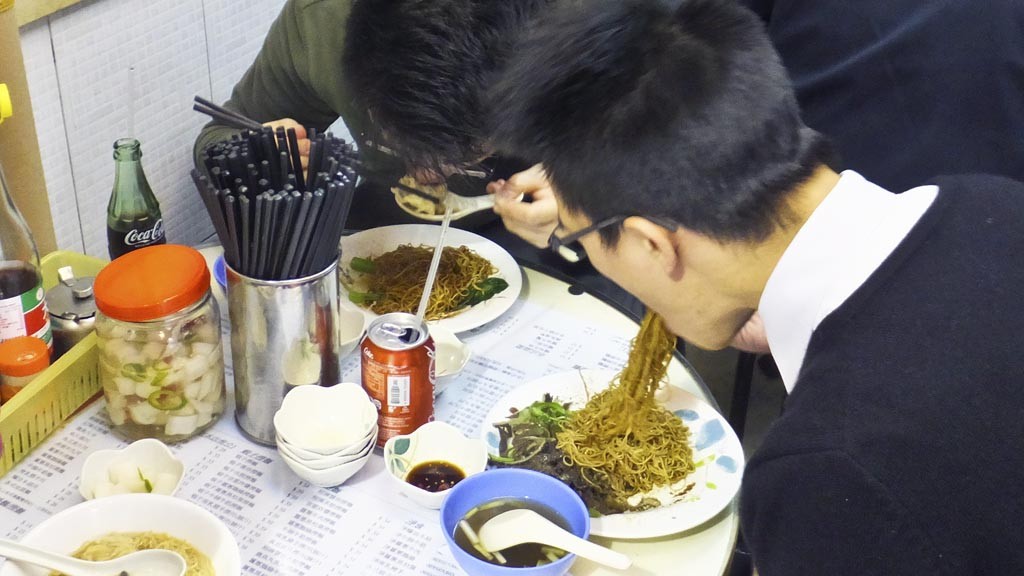
On a post-cruise stay in this ever-changing city, we booked one of the daily foodie tours offered through the Hong Kong Tourism Board. Our starting point is Sham Shui Po, a working- class area of Kowloon near the Prince Edward MTR (subway) station.
The sidewalks here are cluttered with displays of clothes for sale and folding tables piled high with new and used electronics and housewares. There are also scores of unpretentious restaurants and bakeries cooking up food that gets sold to local residents in the know as soon as it’s made.
Let’s have a tour of local tastes:
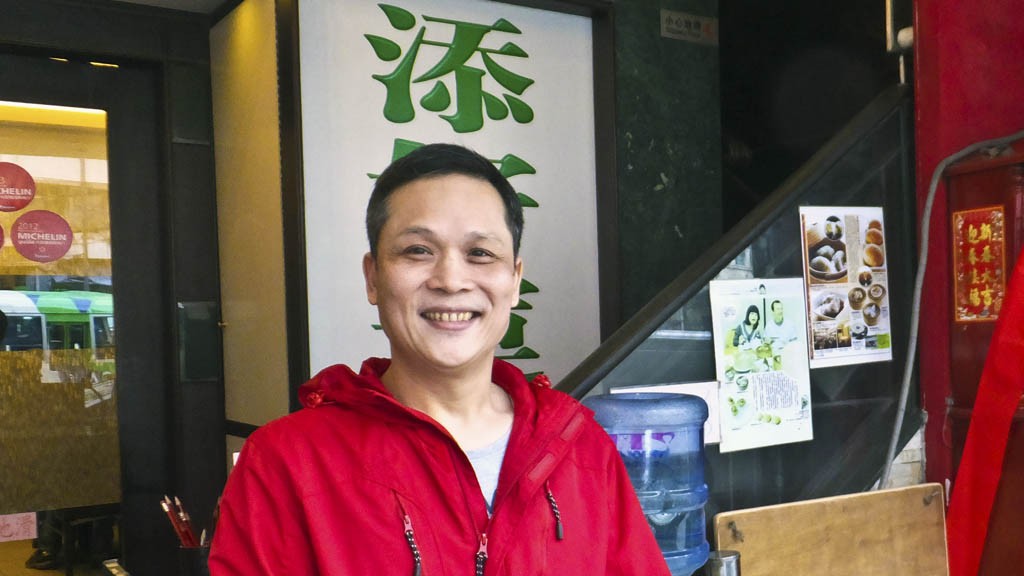
1) Tim Ho Wan
If not for the regular lines outside, you’d be hard pressed to find the doorway adorned with red labels on Fuk Wing Street (no guys… in Cantonese Fuk means good fortune). The stickers proclaim that the austere looking Tim Ho Wan dim sum restaurant has been awarded a star in the Michelin Guide.
It’s the home base of Chef Mak Kwai Pui, who used to work in the 3 Michelin star Lung King Hing of the Four Seasons Hotel. He says he wanted to make top-quality dim sum available to people who can’t afford to dine in luxury hotels.
The restaurant is sparsely decorated and crowded and the menu is a paper place mat with photos of the dishes that look much like classic dim sum favorites. But the proof is in the tasting. They’re made with ultra-fresh ingredients and meticulous care and what Chef Mak calls “heart.”
It’s a common mistake to eat dim sum as soon as it arrives at the table, the chef advises. The secret to savoring the taste of dim sum is to let it cool a bit before you bite in.
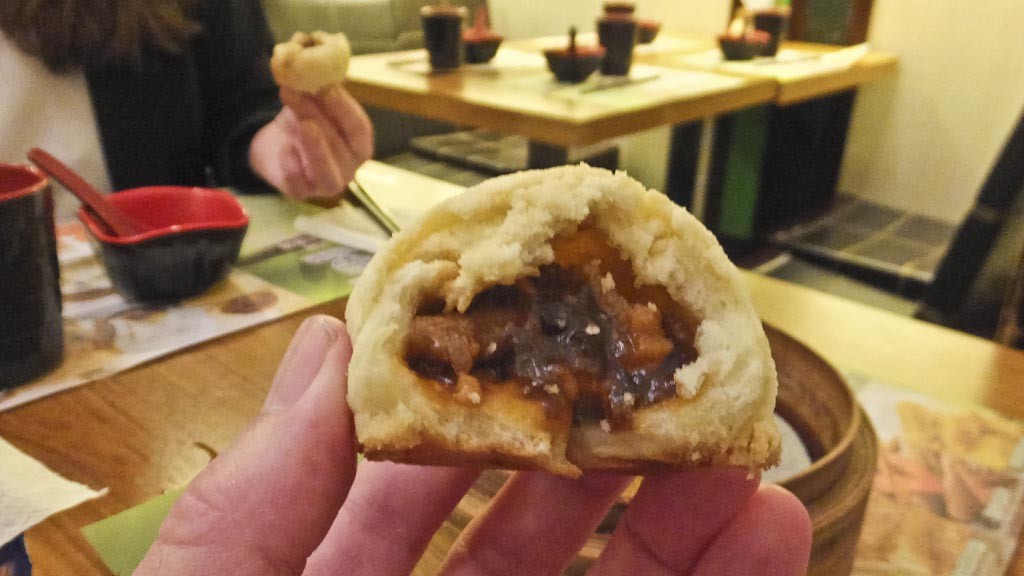
What can they do to make a pork bun rise to gourmet levels? Bite into one here and you’ll find out. The exterior is crumbly and fluffy and the barbecued pork inside oozes with a sweet and salty sauce.
Each bite of a chiu chow style steamed dumpling or glue rice steamed in lotus leaf is an explosion of flavor. Other specialties are the vermicelli roll stuffed with pig’s liver and pan fried carrot cake and the melt in your mouth steamed egg cake Nothing on the menu costs more than the equivalent of about $4 U.S.
The concept is so popular there are now four other locations of the restaurant in Hong Kong and one in Singapore.
2) Pat Sin Bakery
Next is a walk to visit a bakery that’s become a local legend. It started as the bakery for a restaurant that closed a couple of decades ago and the family moved the equipment to Nam Cheong Street and set it up as an independent shop.
Now operated by a second generation, it’s become a tradition for its consistently top quality products including walnut cookies, sesame rolls and fried red bean dumplings and hand-made moon cakes. A gold plaque inside the restaurant bears the initials PS, for Pat Sin, which means “eight immortals.”
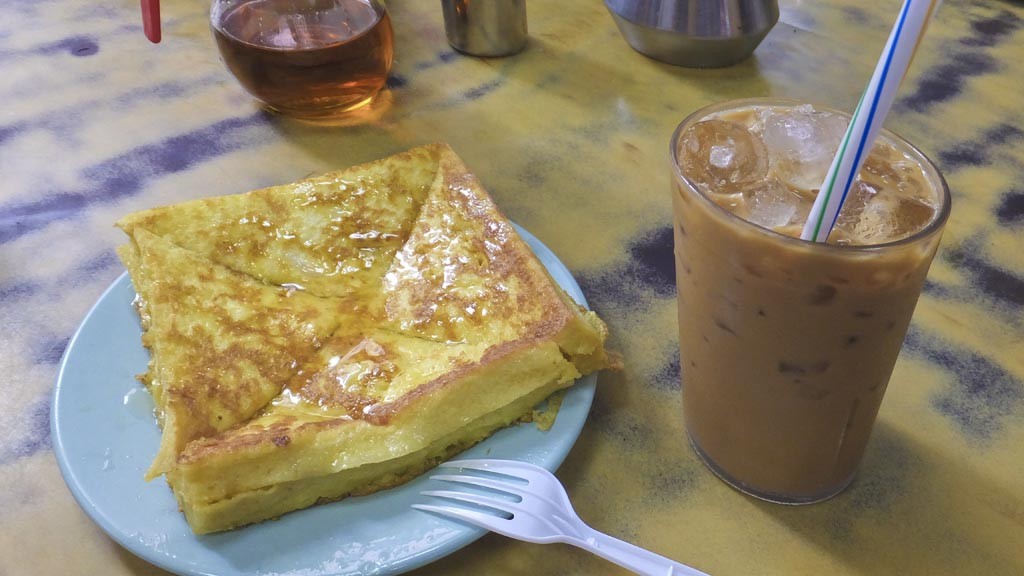
3) Chinese French Toast
Next a quick stop for what you won’t often find in Chinese restaurants in other parts of the world, but is a specialty in this neighborhood. A local snack is two slices of bread dipped in an egg sauce and fried and then served with a jam filling and drizzled with maple syrup. It would make an excellent breakfast with a mug of tea. It’s tasty, but filling and we’ve got a lot of eating left to do on our tour.
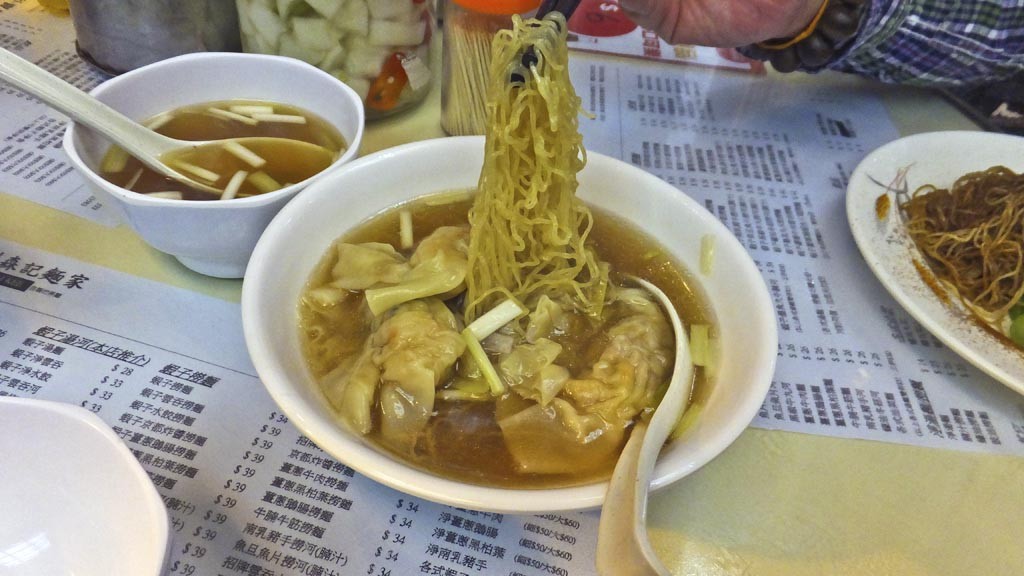
4) Lau Sam Kee Noodle Shop
The tiny Lau Sam Kee shop has been famous for its Cantonese bamboo noodles for 60 years. They still knead and roll the dough by hand with bamboo poles, a time-consuming process of repeated rolling that brings out flavor and resilience in the structure of the flour.
Unlike ordinary noodles that get flabby in cooking, these ultra-thin noodles keep their crunch and they never stick together. They’re served on simple plates with steamed vegetables and tea or soda.

5) Put Chai Ko
Then, if you haven’t yet had your fill, there’s a final stop at a street-corner shop for a dessert, or just a taste of a Hong Kong street food specialty: bean pudding or put chai ko. The sweet, rich almost cake-like pudding became popular in the 1980s when it was sold all over the city from pushcarts. Today, it’s less ubiquitous but still found in many local street food stands and served on tissue paper for eating on the go.
If you ask, you can get a small taste for free. After so many tastings this afternoon, that’s all I wanted. The sweet treat is a fitting way to top off a great street meal.
6) Snake soup anyone?
We could go on. For the brave, there’s snake soup emporium as well on Fuk Wa Street. I’ve tried snake soup in the past (tastes kind of like chicken), although it’s not my thing, I’m sure it their version is wonderful. But I’ve reached my limit for an afternoon of eating. You can also buy a belt made with the skins of the critters they cook, but they’re an acquired taste in fashion.
And all the restaurants with their well-worn tables and paper menus live up to the old saying that in Chinese cuisine it’s not the setting but what’s on the plate that counts.
That’s what makes Hong Kong such a fascinating food adventure.





